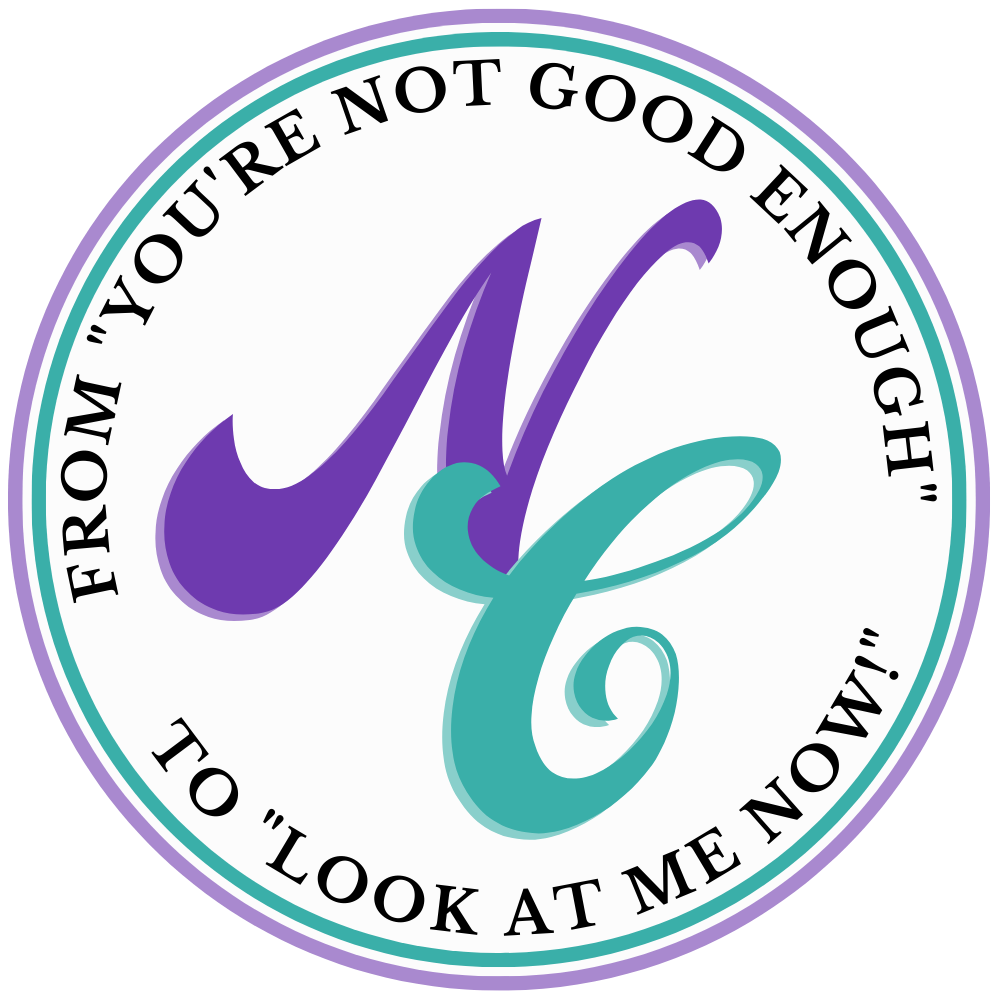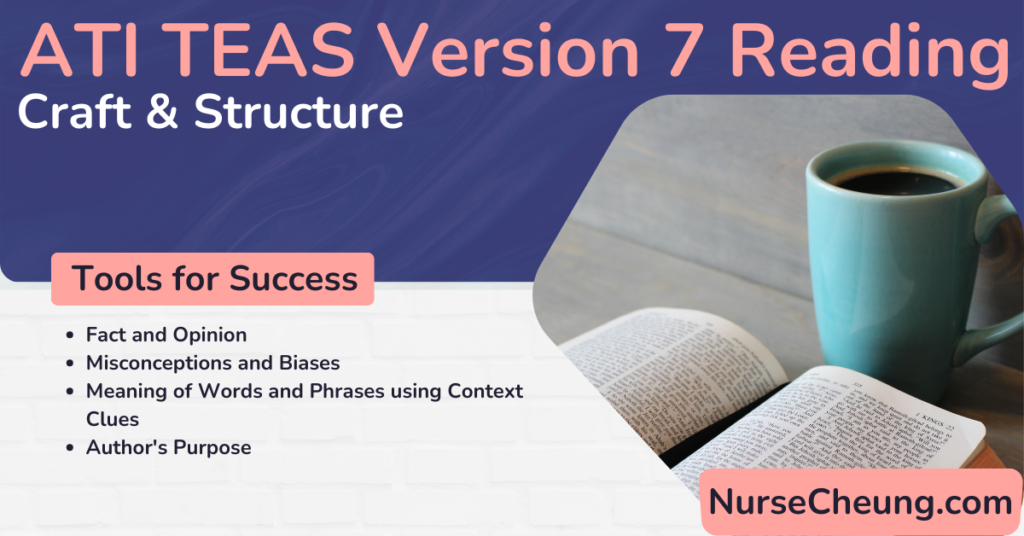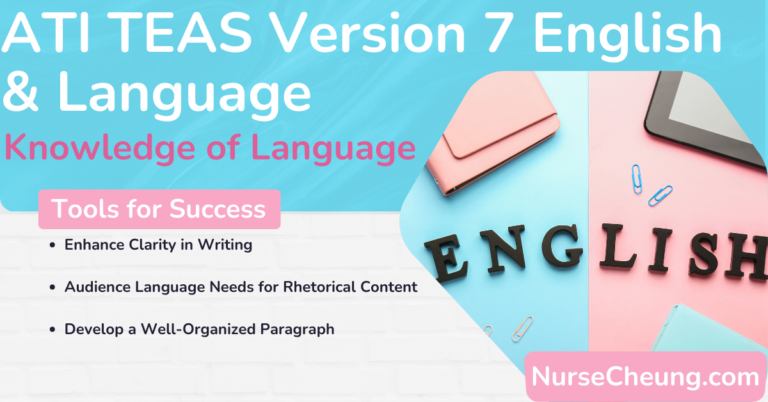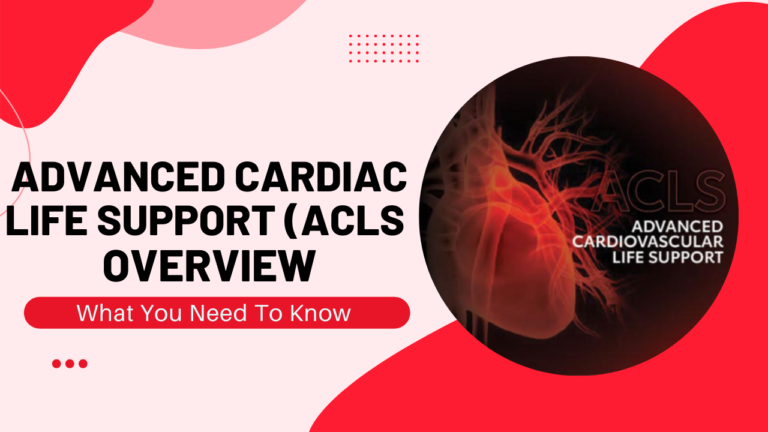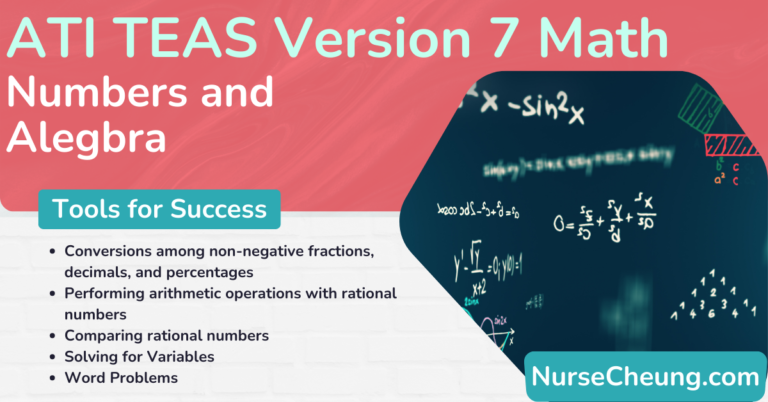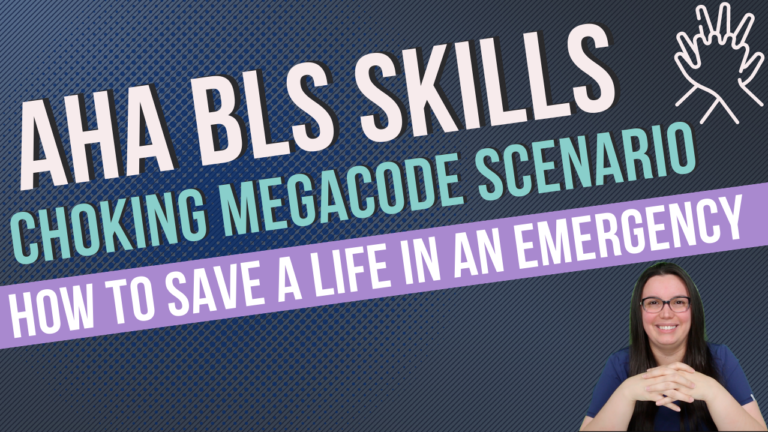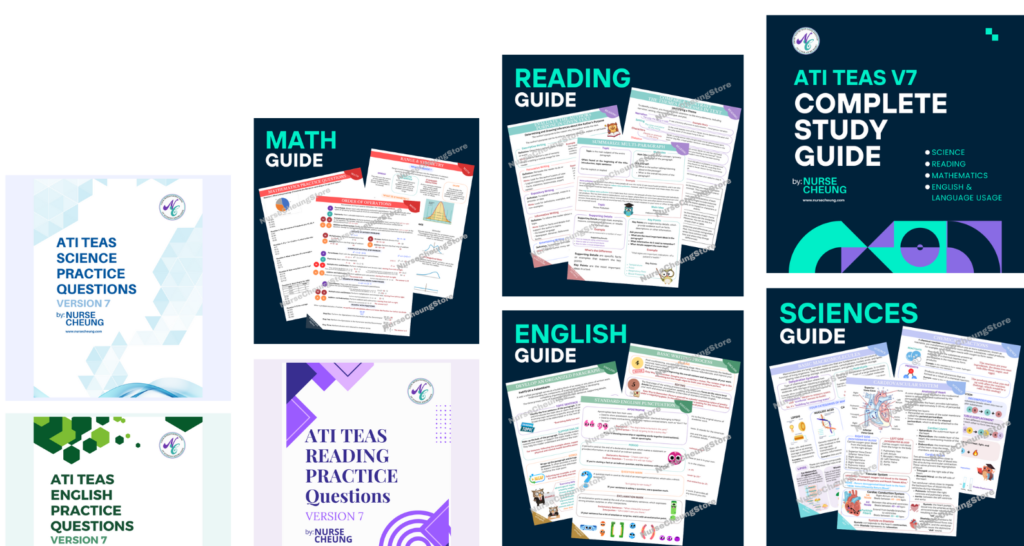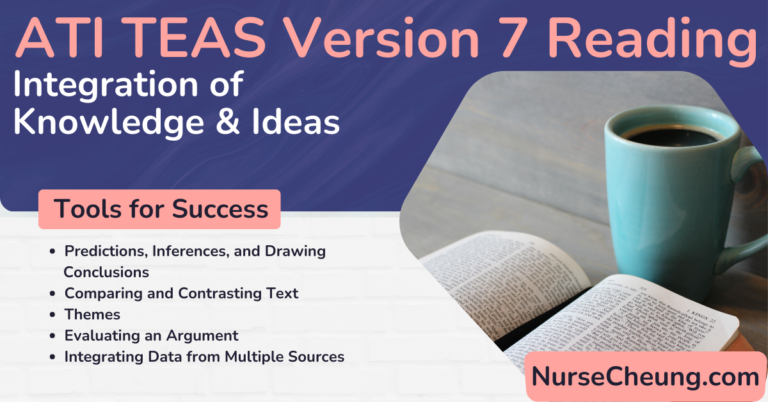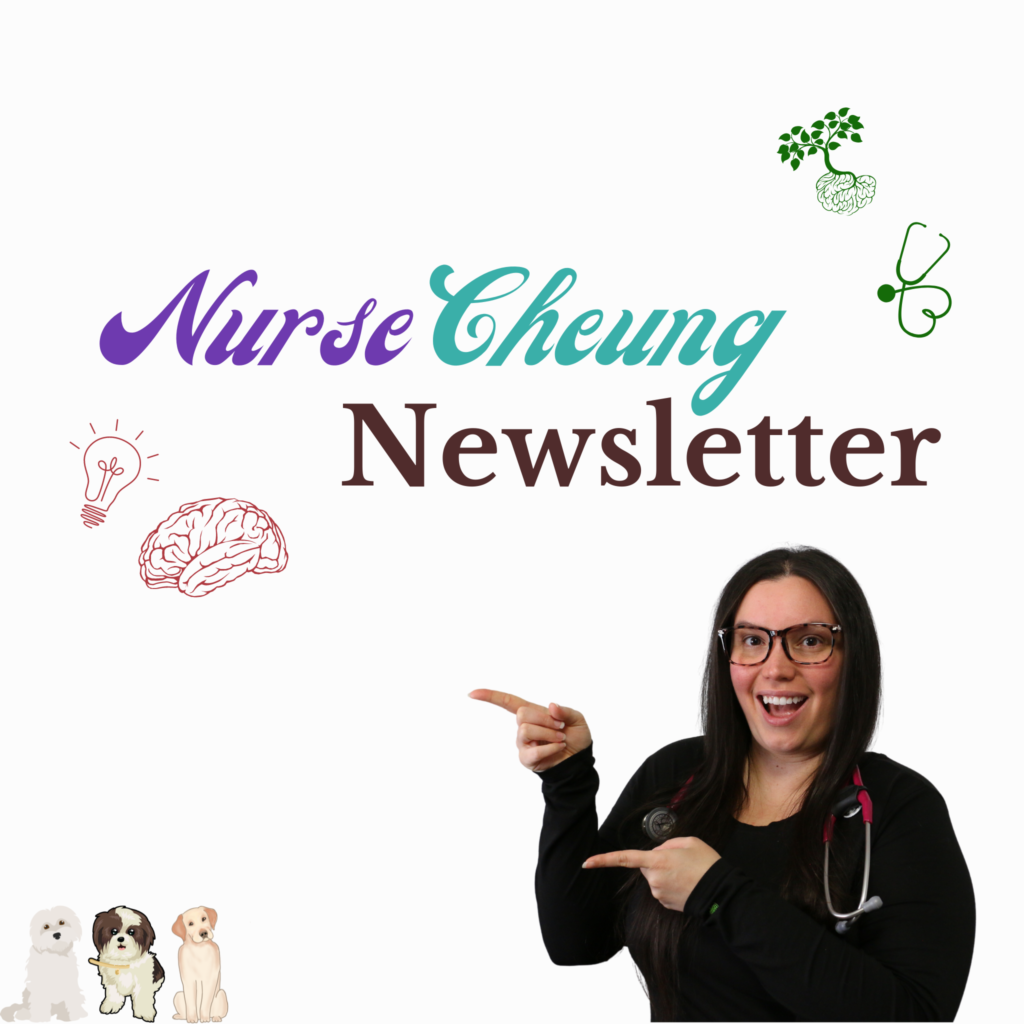If you’re reading this, there’s a good chance you’re taking the ATI TEAS Reading test. And if that’s the case, then you know that craft and structure are two of the most important factors in this exam.
In this blog post, we’ll discuss what these terms mean and how you can learn to apply them to your own reading comprehension skills. We’ll also provide some tips and strategies for improving your score on the ATI TEAS Reading test!
Objectives for Craft and Structure
Total scored items on ATI TEAS: 9 questions out of 39
Distinguish Between Fact and Opinion to Identify Misconceptions and Biases
Recognizing Factual Writing Supported by Evidence
When information is presented as factual in a text, the reader must be able to trust that the information is accurate and trustworthy.
To determine whether a statement is a fact or opinion, look for clues in the text itself.
- Is the author citing specific evidence to support the claim?
- Are they using language that indicates they are sharing their own opinion?
- Are their citations to support the facts?
For example, let’s say you come across the following sentence in a passage: “The sun is the largest star in our solar system.” This is a fact. We know this to be true because it is supported by scientific evidence.
Now, let’s say you come across the following sentence: “I think the sun is the most beautiful star in our solar system.” This is an opinion. The author is sharing their own personal thoughts on the matter.
When you’re reading a text, it’s important to be able to identify these differences. This will help you understand the author’s point of view, and it will also help you spot any misconceptions or biases.
There are various types of sources and examples in the text to show evidence of fact including print and electronic sources, personal interviews, and observations.
Credible sources are those that come from reliable authors and contain accurate information.
The source should also be up-to-date.
Identifying an Author's Point of View and ViewPoint
An author’s point of view is their perspective or opinion on a particular issue.
This can be expressed directly, or it can be implied through the language and tone of the text.
For example, an author might use the first-person point of view to express their own opinion on a topic. This can be identified with the use of “I,” “me,” and “we” pronouns.
They might also use a third-person point of view to discuss someone else’s opinion or to present objective information. This can be identified with the use of “he,” “she,” and “they” pronouns.
The key is to be able to identify the author’s point of view so that you can understand their argument.
Viewpoint is similar to point of view, but it refers to the biases that an author may have.
These can be based on their personal experiences, their cultural background, or their political beliefs.
It’s important to be able to identify these biases so that you can understand the author’s argument and critically evaluate the information they are presenting.
Author's Tone and Bias
The tone of a text is the overall attitude that the author has towards the subject matter.
This can be positive, negative, or neutral. The ATI TEAS test may also use words such as joyful, detached, and ominous.
To determine the tone, it may be best to consider the event, context, or circumstance behind the text.
For example, an author might have a positive tone towards the subject of education. This can be identified through the use of positive words and phrases such as “learning opportunities” and “the importance of education.”
On the other hand, an author might have a negative tone towards the subject of education. This can be identified through the use of negative words and phrases such as “the burden of homework” and “the pressure of standardized tests.”
The key is to be able to identify the author’s tone so that you can better understand their argument.
Bias is when an author shows a preference for one thing over another.
This can be based on their personal experiences, their cultural background, or their political beliefs.
For example, an author might be biased towards the subject of education because they believe that it is the key to success. This can be identified through the use of phrases such as “education is the key to success” and “a good education is essential.”
On the other hand, an author might be biased towards the subject of education because they believe that it is a waste of time. This can be identified through the use of phrases such as “education is a waste of time” and “you don’t need the education to be successful.”
Detecting Bias vs Stereotypes
It’s important to be able to distinguish between bias and stereotypes.
Bias is when an author shows a preference for one thing over another.
Stereotypes are oversimplifications of groups of people that are based on preconceived notions.
For example, an author might be biased towards the subject of education because they believe that it is the key to success.
On the other hand, an author might stereotype people who are educated as being snobby and arrogant.
How can readers detect bias and stereotypes in a text?
One way to do this is to consider the language that the author is using.
For example, biased language might include words and phrases such as “should,” “must,” and “everyone.”
The stereotypical language might include words and phrases such as “all,” “every,” and “never.”
Another way to detect bias and stereotypes is to consider the author’s point of view.
If the author is presenting their argument from a personal perspective, then they are more likely to be biased.
If the author is presenting their argument from a neutral perspective, then they are less likely to be biased.
Distinguish between Fact and Opinion
It’s important to be able to distinguish between fact and opinion.
A fact is a statement that can be proven to be true.
An opinion is a statement that reflects the author’s beliefs, values, or feelings.
For example, the statement “Education is the key to success” is an opinion.
The statement “A good education is essential” is a fact.
To determine whether a statement is a fact or an opinion, you can ask yourself two questions:
- Can the statement be proven to be true?
- Does the statement reflect the author’s beliefs, values, or feelings?
If you can answer “yes” to the first of these questions, then the statement is a fact. It must be supported by credible and reliable resources.
If you can answer “yes” to the second of these questions, then the statement is an opinion. Opinions may mislead or persuade a reader depending on the context.
Interpret the Meaning of Words and Phrases using Context
Using Context Clues
When you encounter an unfamiliar word, you can use the context to determine its meaning.
Context clues are words or phrases that surround an unfamiliar word and provide information about its meaning.
There are four types of context clues:
Definition: The author directly defines the word or phrase.
Example: The word “bias” is defined as “a preference for one thing over another.”
Restatement: The author restates the word or phrase using a different language.
Example: Carnivores, that is, meat-eaters, are at the top of the food chain.
Contrast: The author provides an opposite of the word or phrase.
Example: While Carlos is hardworking, his indolent sister spends more time watching television than working.
Inference: The author provides information that can be inferred from the word or phrase.
Example: Jennifer’s belligerence surprised everyone. She threw her phone across the room and pushed through the door.
The Effect of Word Choice
The author’s choice of words can have a significant effect on the meaning of a text. The author’s tone (author’s feelings towards the text) can affect the mood (the reader’s feelings towards the text).
For example, the word “success” can have a positive or negative connotation.
- The definition of the word “success” is “the achievement of something desired, planned, or attempted.” The connotation of the word “success” is positive.
The word “essential” has a positive connotation, while the word “good” has a neutral connotation.
The word “key” has a positive connotation, while the word “prerequisite” has a negative connotation.
When you are reading, it is important to be aware of the effect that word choice can have on the meaning of a text.
Figurative Language
Figurative language is language that is not meant to be taken literally.
Figurative language can be used to make a point more clearly, to make a comparison, or to add interest to a text.
There are four types of figurative language: simile, metaphor, personification, and hyperbole.
A simile is a figure of speech that uses the words “like” or “as” to make a comparison.
For example, “She’s as busy as a bee.”
A metaphor is a figure of speech that uses one thing to represent another.
For example, “She’s a fireball.”
Personification is a figure of speech that gives human characteristics to nonhuman objects.
For example, “The wind was howling.”
Hyperbole is a figure of speech that uses exaggeration to make a point.
For example, “I’m so hungry I could eat a horse.”
As you are reading, be on the lookout for figurative language. When you come across a figure of speech, try to determine what the author is trying to communicate.
Evaluate the Author's Purpose in a Given Text
Determining and Drawing Inferences about the Author's Purpose
The author’s purpose is the reason why the author wrote the text. The author’s purpose can be to inform, entertain, describe, explain or persuade.
In order to determine the author’s purpose, you need to look at the text as a whole and consider the following:
- The topic of the text
- The audience
- The tone
- The word choice
- The figurative language
- The organization
Once you have considered all of the above, you should be able to identify the author’s purpose.
Informative Writing
The purpose of informative writing is to inform the reader about a topic.
When you are reading informational text, look for facts and details that support the author’s claims.
The author should be unbiased and present both sides of the argument if there is one.
Persuasive Writing
The purpose of persuasive writing is to persuade the reader to do something or to believe something.
When you are reading persuasive text, look for the author’s point of view.
The author should be biased and present only one side of the argument.
The author will use a variety of techniques to try to persuade the reader. These techniques can include:
- Logical reasoning
- Emotional appeal
- Use of facts and statistics
- Testimonials
- Expert opinion
Entertaining Writing
The purpose of entertaining writing is to entertain the reader.
When you are reading entertaining text, look for the author’s use of humor, irony, and sarcasm.
The author may also use a variety of literary devices to add interest to the text such as plot, setting, characterization, conflict, and themes.
Descriptive Writing
The purpose of descriptive writing is to describe a person, place, thing, or event.
When you are reading descriptive text, look for the author’s use of sensory details.
The author should use vivid language to create a mental image for the reader by describing people, things, places, and events.
Expository Writing
The purpose of expository writing is to explain a concept, steps in a process, or idea.
When you are reading expository text, look for the author’s use of definitions, examples, and non-examples.
The author should present the information in a clear and concise manner.
